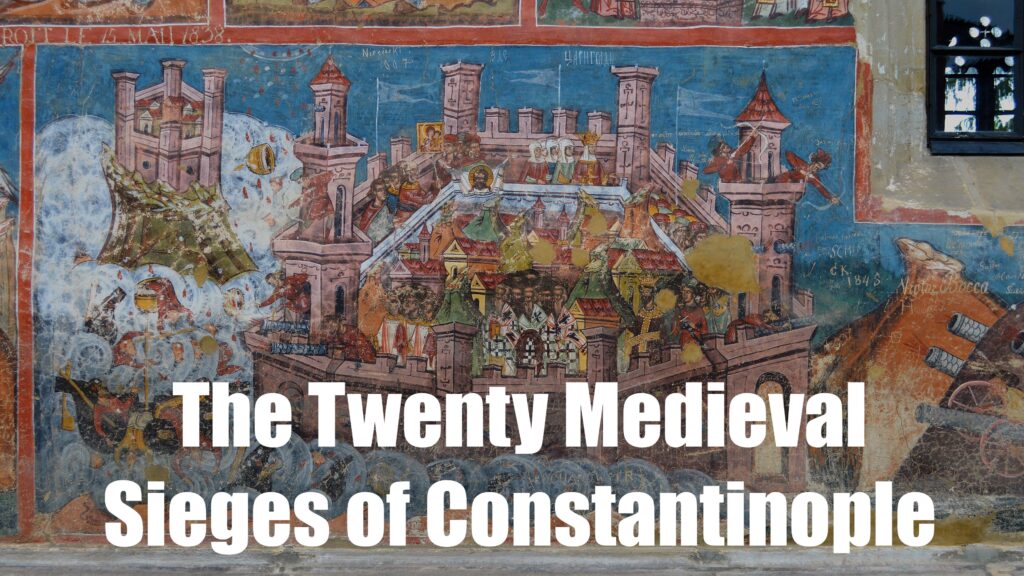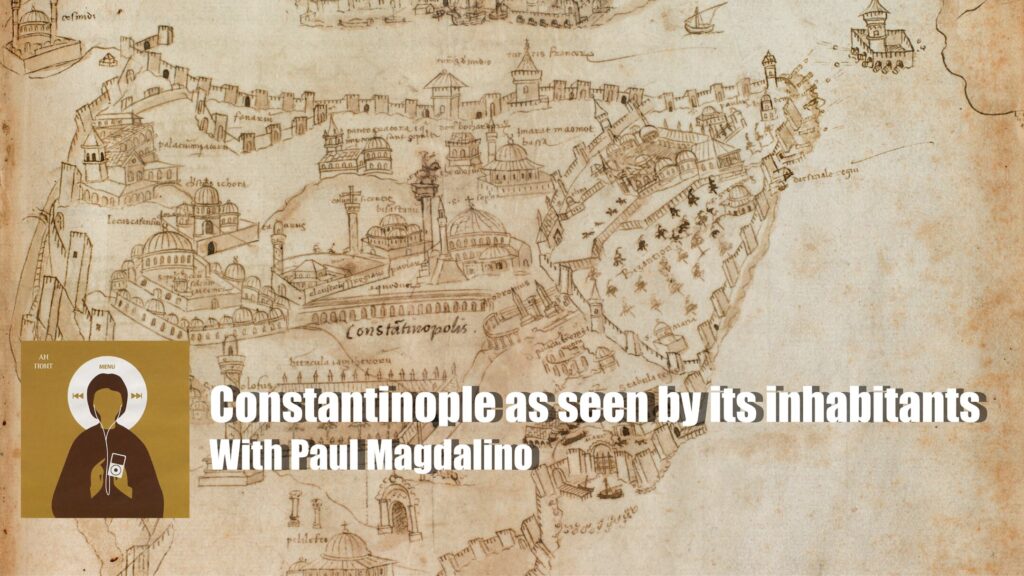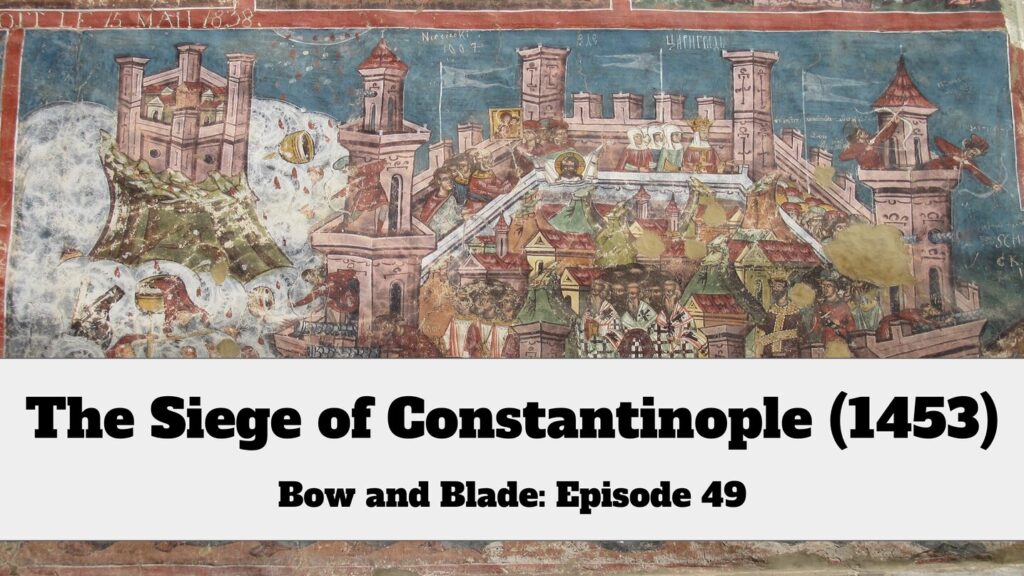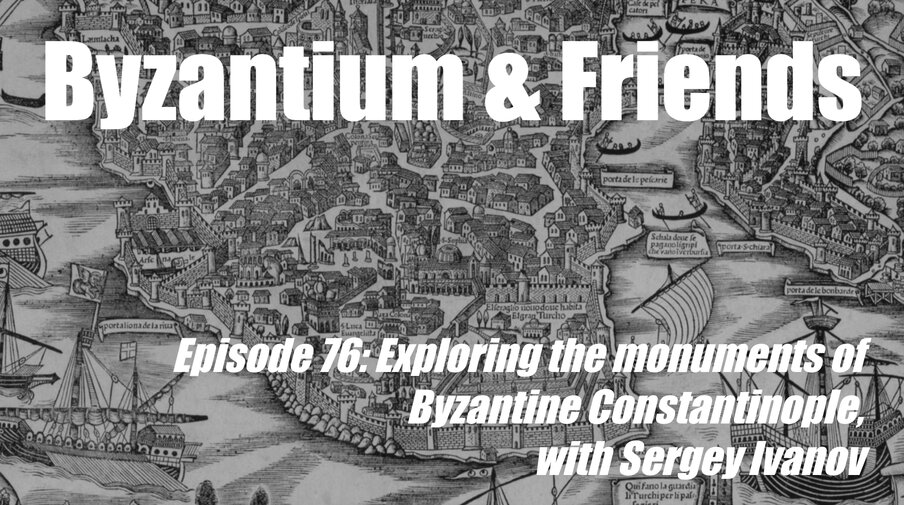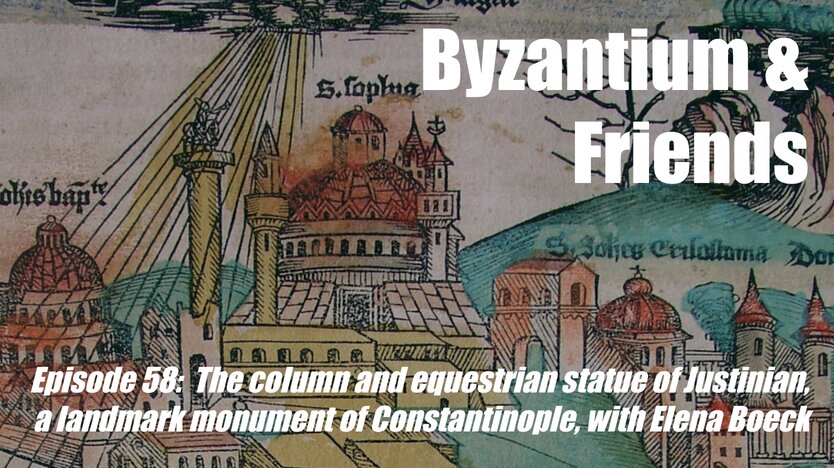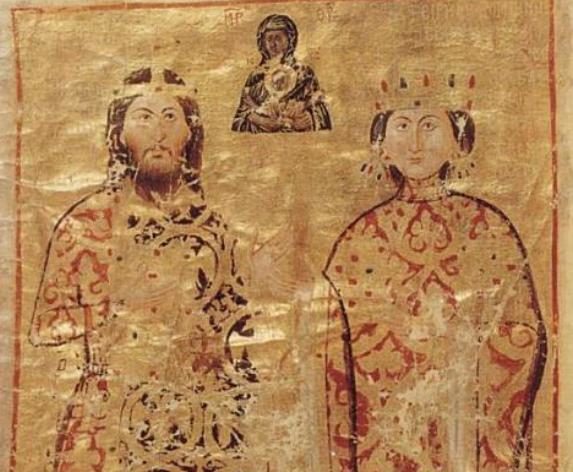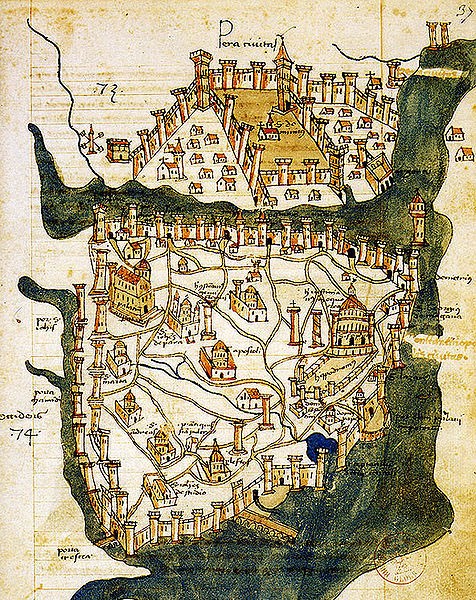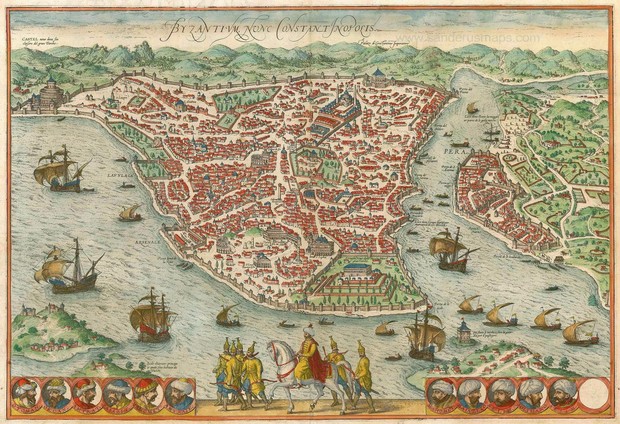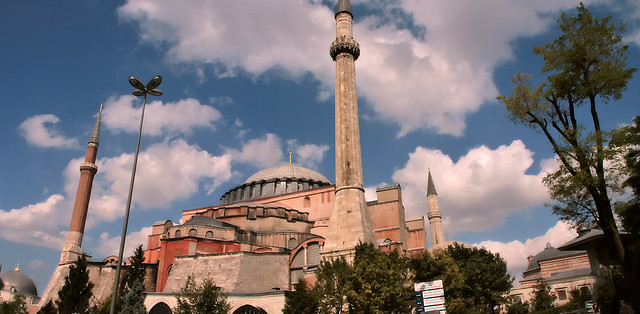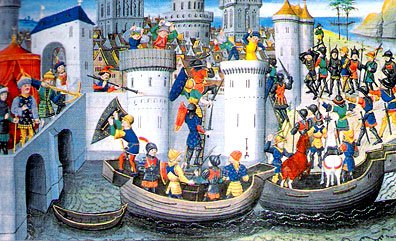The Twenty Medieval Sieges of Constantinople
Discover the twenty medieval sieges of Constantinople, from early attacks by Avars and Arabs to the city’s final fall in 1453.
New Medieval Books: The Hippodrome of Constantinople
The Hippodrome of Constantinople stood at the heart of Byzantine public life. This book explores the history of the stadium, the thrilling chariot races it hosted, and the vital role it played in the political, social, and cultural fabric of the empire.
New Medieval Books: The Church of St. Polyeuktos at Constantinople
Built in the 6th century, the Church of St. Polyeuktos was once the largest church in Constantinople. This book tells the story of this building and its rediscovery in the 1960s.
Constantinople as seen by its inhabitants, with Paul Magdalino
A conversation with Paul Magdalino about the literary traditions and genres that Constantinopolitans developed to talk about the origins, history, cosmic importance, and superlative beauty of their city — the City.
Medieval Constantinople’s Wildest Feud: How One Man Built an Earthquake Machine for Revenge
In medieval Constantinople, a neighbourhood feud between an architect and a lawyer escalated into a battle of wits involving steam-powered earthquakes and blinding mirrors. This is the bizarre story of how one man used science to terrorise his rival, earning himself the nickname ‘Zeus the Lightener.’
The Siege of Constantinople (1453)
One of the key dates from the Middle Ages is the year 1453. In this episode of Bow & Blade, Michael and Kelly discuss how the Ottomans were able to conquer the city of Constantinople and bring an end to the Byzantine Empire.
The Discovery of Constantinople, with Sarah Bassett
A conversation with Sarah Bassett about the exploration and discovery of the antiquities of Constantinople, starting in the sixteenth century. We talk about scholars, diplomats, and archaeologists, and the intellectual trends of their times.
The remarkable world of hospitals, orphanages, and leprosaria, with Tim Miller
A conversation with Timothy Miller about philanthropic institutions in Constantinople, especially hospitals, orphanages, and leprosaria.
Exploring the monuments of Byzantine Constantinople, with Sergey Ivanov
A conversation with Sergey Ivanov on the monuments, buildings, and ruins of the Byzantine phase of the City’s history. We talk about how to explore them, how to access their history, and even get a feel for the lingering presence of the events that took place in them. We ponder what has been lost and what might yet be found.
The column and equestrian statue of Justinian, with Elena Boeck
Though it is often overlooked today, Justinian’s column and colossal statue, which stood for a thousand years next to Hagia Sophia, defined the City almost as much as the Great Church itself. In this episode of Byzantium and Friends, we talk with Elena Boeck about the symbolism, history, and the engineering of this monument.
NEW! The Medieval Magazine No. 108
Spring cleaning! The first issue of the Medieval Magazine with a fresh new face!
In this issue, we look at Norse seasons, medieval beliefs about luck, food and politics in Constantinople, Spanish Easter traditions, and the overlooked life of Catherine of Aragon.
I was there. Constantine Akropolites’ Typikon
Constantine Akropolites wrote an appendix to the typikon for the Church of our Lord’s Resurrection in Constantinople, rebuilt by his father, George (1217-82).
Imagining the Virgin in the Byzantine Night
In the early Byzantine period, the Virgin Mary rose to prominence among Christians – especially in the capital city of Constantinople.
Islamic Spaces and Diplomacy in Constantinople (Tenth to Thirteenth Centuries C.E.)
This article focuses on the built spaces, often described as mosques, of two Muslim communities in Constantinople between the tenth and thirteenth centuries.
Defining Constantinople’s Suburbs through Travel and Geography
This paper considers these challenges as they relate to the suburbs of Constantinople and, in doing so, it seeks to offer some reflections on the ways in which various conceptions of geography, space, and spatial practice can inform late antique suburban studies.
How Hagia Sophia was Built
Stories and legends from the Patria on how the greatest church of the Byzantine world was built
What Remains: Women, Relics and Remembrance in the Aftermath of the Fourth Crusade
After the fall of Constantinople to the Latin Crusaders in 1204 hundreds of relics were carried into the West as diplomatic gifts, memorabilia and tokens of victory. Yet many relics were alsosent privately between male crusaders and their spouses and female kin.
Robert of Courtenay (1221-1227): an idiot on the throne of Constantinople?
Among scholars who have discussed Robert’s reign – however superficially – there appears to exist a relative consensus, with few exceptions, that the misfortunes that befell the empire of Constantinople during this period are largely to be attributed to his personal and utter incompetence. In this contribution I would like to challenge that view.
The Means of Destruction: How the Ottoman Empire Finally Ended the Byzantine Empire
No European had any reason to believe that the Ottomans would capture Constantinople, since they had tried two times previously and had failed in both of those attempts.
‘Part of our commonwealth’: a study of the Normans in eleventh-century Byzantine historiography
‘Part of our commonwealth’: a study of the Normans in eleventh-century Byzantine historiography Alexander Olson (Simon Fraser University) Simon Fraser University: Faculty of…
The Lost Secret History of Nicetas the Paphlagonian
Although the Secret History of Nicetas the Paphlagonian has failed to reach us in its original form, it has probably shaped our knowledge of Byzantium in the ninth and early tenth centuries more than any surviving text.
Manuel II Palaeologus in Paris (1400-1402): Theology, Diplomacy, and Politics
The end of the fourteenth century found the Byzantine Empire in a critical state.
Land and Sea Communications, Fourth–Fifteenth Centuries
The principle that the active and coordinated collaboration of nature and man is an essential requirement for the creation of a network of communications is of fundamen- tal importance.
The Riurikid Relationship with the Orthodox Christian Church in Kievan Rus
Prior to the late tenth century, the princes of the Riurikid dynasty were rulers over the loose collection of pagan Slavic tribes and minor city states that were Kievan Rus. However, in a relatively short period, the dynasty had linked itself and its legitimacy to rule to the Orthodox Christian Church centered in Constantinople.
The Commercial Map of Constantinople
The commercial topography of Constantinople was in part determined by the fact that it was a sea-bound city on seven hills, making access from the port to the forum and other commercial premises a key necessity in urban development.
